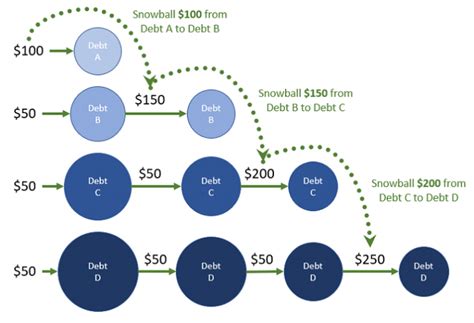
A California woman’s generous impulse at a San Jose Round Table Pizza restaurant turned into an expensive error when she accidentally added a $5,000 tip to her $67.14 takeout order. The costly mistake, initially intended as a $5 or $10 tip, has become a cautionary tale highlighting the importance of carefully reviewing digital transactions.
Grace, whose last name is being withheld to protect her privacy, placed her order at the Round Table Pizza on Blossom Hill Road, opting for the convenience of paying with her debit card. As reported by KGO-TV, in her haste, Grace inadvertently entered “5000” into the tip field on the payment screen instead of the intended amount. It wasn’t until days later, when she meticulously reviewed her bank statement, that she discovered the staggering discrepancy.
“I went back and looked at my bank statement, and I’m like, ‘Oh my gosh!’” Grace recounted to KGO-TV. The sheer size of the tip far exceeded her initial intentions, making it a painful financial blow.
Immediately upon realizing the error, Grace contacted both the Round Table Pizza location and her bank in an attempt to rectify the situation. The restaurant management, sympathetic to her plight, informed her that they had already disbursed the tip among their employees. This distribution further complicated the process of retrieving the funds, transforming what seemed like a simple correction into a logistical challenge.
The restaurant’s owner, Roderick Cabaniag, expressed understanding and offered assistance, but the decentralized nature of tip distribution presented a significant hurdle. Cabaniag explained that the tip had been divided among the staff, making it difficult to recover the full amount quickly.
Grace’s bank advised her to file a dispute for the erroneous charge. However, the dispute process can take time, and there’s no guarantee of a favorable outcome. Banks typically investigate such claims thoroughly, reviewing transaction records, surveillance footage, and employee statements. The burden of proof often falls on the customer to demonstrate that the charge was indeed an error.
As of now, Grace is navigating the complexities of the dispute process, hoping to recover the mistakenly added $5,000. Her experience serves as a stark reminder to exercise vigilance when using digital payment systems and to double-check all entered amounts before finalizing transactions. The incident also raises questions about the responsibilities of businesses and financial institutions in preventing and resolving such errors.
The incident has prompted discussions about the ease with which such mistakes can occur in the digital age, especially with the increasing prevalence of touch-screen payment systems. Experts recommend taking a moment to carefully review the payment screen before confirming any transaction, regardless of how routine it may seem. They also advise setting up transaction alerts to monitor bank accounts for unusual activity.
This unfortunate incident underscores the potential pitfalls of digital transactions and emphasizes the need for both consumers and businesses to be vigilant in preventing and addressing payment errors.
Further Details and Context
The story of Grace’s accidental $5,000 tip at Round Table Pizza highlights several important aspects of modern financial transactions and consumer responsibility. While the incident itself is straightforward, the implications and surrounding circumstances offer a deeper understanding of the challenges consumers face in the digital age.
The Rise of Digital Payment Systems
In recent years, digital payment systems have become increasingly popular, driven by convenience and technological advancements. Touch-screen payment terminals, like the one used at Round Table Pizza, are now commonplace in restaurants, retail stores, and other businesses. These systems offer customers the ability to pay with debit cards, credit cards, and mobile payment apps, often with the option to add a tip directly on the screen.
While digital payment systems offer numerous benefits, they also introduce new opportunities for errors. Unlike traditional cash transactions, where customers physically hand over the exact amount, digital transactions rely on accurate data entry. The ease with which numbers can be miskeyed or misinterpreted can lead to costly mistakes, as demonstrated by Grace’s experience.
Consumer Responsibility and Vigilance
Grace’s story underscores the importance of consumer responsibility and vigilance when using digital payment systems. While it’s easy to become complacent when making routine transactions, taking a moment to carefully review the payment screen can prevent costly errors.
Experts recommend the following tips for avoiding similar mistakes:
- Double-check the amount: Before confirming any transaction, carefully review the total amount displayed on the screen, including any added tips or fees.
- Pay attention to the decimal point: Ensure that the decimal point is correctly placed when entering amounts. A misplaced decimal point can result in a significantly higher or lower charge than intended.
- Use transaction alerts: Set up transaction alerts with your bank or credit card company to receive notifications of all purchases. This allows you to quickly identify and report any unauthorized or incorrect charges.
- Review bank statements regularly: Monitor your bank statements regularly for any discrepancies. Report any errors to your bank immediately.
- Be aware of your surroundings: Avoid distractions when making payments. Focus on the transaction at hand to minimize the risk of errors.
Restaurant and Business Responsibilities
While consumers bear the primary responsibility for ensuring the accuracy of their transactions, businesses also have a role to play in preventing and resolving payment errors.
Some best practices for businesses include:
- Clear and user-friendly payment interfaces: Design payment interfaces that are easy to understand and use. Avoid cluttered screens and confusing language.
- Confirmation screens: Implement confirmation screens that display the total amount of the transaction, including any added tips or fees, before finalizing the payment.
- Employee training: Train employees to assist customers with payment transactions and to be vigilant in identifying and resolving potential errors.
- Prompt and helpful customer service: Provide prompt and helpful customer service to customers who report payment errors. Investigate claims thoroughly and work to resolve issues fairly and efficiently.
- Transparent tip policies: Clearly communicate tip policies to both employees and customers. Ensure that tips are distributed fairly and in accordance with applicable laws.
The Tip Distribution Challenge
One of the complicating factors in Grace’s case was the fact that the restaurant had already distributed the tip among its employees. While this is a common practice in the restaurant industry, it can make it difficult to recover funds when a payment error occurs.
In situations where tips have already been distributed, businesses may need to rely on employee cooperation to recover the funds. This can be challenging, as employees may be reluctant to return money that they have already received and spent.
Some businesses may choose to absorb the cost of the error rather than attempt to recover the funds from employees. However, this can be a significant financial burden, especially for small businesses.
The Bank Dispute Process
When a customer reports a payment error, their bank will typically initiate a dispute process. This process involves investigating the claim, reviewing transaction records, and gathering evidence from both the customer and the business.
The bank will typically require the customer to provide documentation to support their claim, such as a copy of their bank statement, a receipt for the transaction, and a written explanation of the error.
The bank will also contact the business to obtain their perspective on the matter. The business may be required to provide transaction records, surveillance footage, and employee statements.
Once the bank has gathered all of the necessary information, it will make a determination as to whether the error occurred and who is responsible for it. If the bank finds in favor of the customer, it will typically reverse the charge and credit the customer’s account.
The dispute process can take time, and there is no guarantee of a favorable outcome. The burden of proof often falls on the customer to demonstrate that the charge was indeed an error.
Legal Considerations
In some cases, payment errors may involve legal considerations. For example, if a business refuses to refund an erroneous charge, a customer may have legal recourse.
The laws governing payment errors vary by state. Some states have laws that specifically address electronic funds transfers and consumer rights.
Customers who believe they have been the victim of a payment error should consult with an attorney to discuss their legal options.
Impact on Consumer Trust
Incidents like Grace’s accidental $5,000 tip can erode consumer trust in digital payment systems. When customers feel that they are vulnerable to errors and that businesses and financial institutions are not doing enough to protect them, they may be less likely to use digital payment systems.
To maintain consumer trust, it is essential that businesses and financial institutions take steps to prevent payment errors and to resolve them fairly and efficiently when they occur.
The Need for Improved Security Measures
Grace’s experience highlights the need for improved security measures in digital payment systems. One potential solution is to implement multi-factor authentication for all transactions. Multi-factor authentication requires customers to provide two or more forms of identification before a transaction can be completed. This can help to prevent unauthorized transactions and reduce the risk of errors.
Another potential solution is to develop more sophisticated fraud detection systems. These systems can use artificial intelligence and machine learning to identify suspicious transactions and flag them for review.
The Broader Economic Context
The incident occurs within a broader economic context where many individuals are facing financial pressures. An unexpected loss of $5,000 can be particularly devastating for those living paycheck to paycheck or struggling to make ends meet. This underscores the importance of financial literacy and responsible money management.
The Psychology of Errors
Human error is a common phenomenon, and it’s important to understand the psychological factors that can contribute to mistakes in digital transactions. Factors such as stress, fatigue, and distraction can all increase the likelihood of errors. Additionally, the design of payment interfaces can influence the rate of errors. Poorly designed interfaces that are confusing or difficult to use can lead to more mistakes.
The Role of Media Coverage
Media coverage of incidents like Grace’s accidental tip can raise awareness of the risks associated with digital payment systems and encourage consumers to be more vigilant. However, it’s also important for media coverage to be balanced and to avoid sensationalizing the issue. Sensationalized coverage can create unnecessary fear and anxiety among consumers.
Technological Solutions
Technological solutions can play a key role in preventing and resolving payment errors. For example, some banks offer features that allow customers to set spending limits on their debit cards or to receive alerts when their account balance falls below a certain level. These features can help customers to avoid overspending and to detect unauthorized transactions.
The Future of Digital Payments
The future of digital payments is likely to be characterized by increased security, convenience, and personalization. As technology evolves, we can expect to see new and innovative payment methods emerge. However, it’s important to ensure that these new payment methods are secure and that consumers are protected from errors and fraud.
Ethical Considerations
The incident also raises ethical considerations for both the restaurant and the employees who received the tip. While the employees were entitled to the tips they received, there is a moral obligation to return the money if they know it was given in error. The restaurant also has an ethical responsibility to assist the customer in recovering the funds.
The Importance of Communication
Effective communication is essential for resolving payment errors. Customers should communicate clearly and promptly with their bank and the business involved. Businesses should respond promptly and professionally to customer inquiries and work to resolve issues fairly and efficiently.
The Power of Social Media
In today’s digital age, social media can play a significant role in shaping public perception of events like Grace’s accidental tip. Social media can be used to raise awareness of the issue, to share information, and to mobilize support for the customer. However, it’s also important to be mindful of the potential for misinformation and to avoid spreading rumors or unverified information.
Prevention is Key
The best way to avoid payment errors is to take preventive measures. By being vigilant, paying attention to detail, and using secure payment methods, consumers can significantly reduce the risk of errors. Businesses can also play a role by implementing clear and user-friendly payment interfaces, training employees to assist customers, and providing prompt and helpful customer service.
Conclusion
Grace’s accidental $5,000 tip serves as a valuable lesson for all consumers who use digital payment systems. By being aware of the risks and taking preventive measures, we can protect ourselves from costly errors. Businesses and financial institutions also have a responsibility to prevent payment errors and to resolve them fairly and efficiently when they occur. Only by working together can we ensure that digital payment systems are safe, secure, and reliable.
Frequently Asked Questions (FAQ)
-
What exactly happened in this case?
A California woman, identified only as Grace, accidentally entered “$5,000” as a tip on a $67.14 takeout order at a Round Table Pizza restaurant in San Jose, instead of her intended $5 or $10 tip.
-
What did Grace do when she realized her mistake?
Upon discovering the error on her bank statement, Grace immediately contacted both the Round Table Pizza location and her bank to attempt to rectify the situation and recover the funds.
-
Why is it difficult to get the money back?
The Round Table Pizza management informed Grace that the $5,000 tip had already been distributed among the restaurant’s employees, making it difficult to retrieve the entire sum quickly and easily. The bank is requiring an investigation through a dispute process.
-
What can consumers do to avoid making similar mistakes when using digital payment systems?
Consumers are advised to double-check the amount on the payment screen before confirming transactions, pay attention to the decimal point, set up transaction alerts with their bank, and regularly review their bank statements for any discrepancies.
-
What are the responsibilities of businesses in preventing and resolving payment errors?
Businesses should design clear and user-friendly payment interfaces, implement confirmation screens that display the total amount before finalizing the payment, train employees to assist customers with transactions, and provide prompt and helpful customer service to address reported errors.









